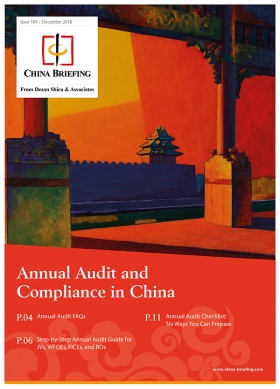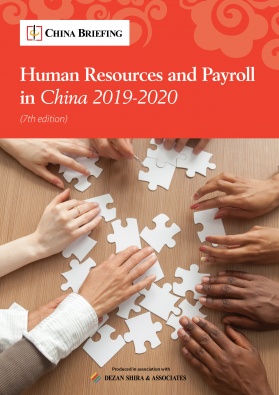China’s Tariff Exclusion Process for US Imports: FAQs
- China has put in place a tariff exclusion process for US products.
- So far, several sets of US goods have been successfully excluded from China’s additional tariffs, as a result of several rounds of the exclusion process.
- Please refer to our article – China’s Tariff Exclusion Lists for US imports: A Timeline to stay abreast of the latest exemptions released by China’s Tariff Commission of the State Council.
On May 13, 2019, China’s Tariff Commission of the State Council announced the Trail Measures on the Exclusion Work for US Products Subject to Additional Tariffs (Tariff Commission Announcement [2019] No.2), triggering the exclusion process for US imports affected by additional tariffs imposed during the trade war.
China has so far carried out two rounds of applications where businesses sought to avail exemptions from additional tariffs, which ended July 5 and October 18, 2019, respectively.
Businesses are advised to pay attention to government announcements on when to apply for the next round of tariff exclusion; those seeking third-party support should also note the internal application deadline of their respective industrial association.
WEBINAR
The ink on the Phase One trade deal was barely dry before a global pandemic broke out, find out how Covid-19 might affect the deal.
REGISTER TODAY
Who can apply for exclusion from Chinese tariffs?
Firms in China that import, produce, or use the relevant products or the industrial associations of such firms are eligible to apply for tariff exemption.
Respective industrial associations are encouraged to collectively submit the application on behalf of their members.
However, repeated applications for tariff exemption on the same product by a firm and an industrial association must be avoided.
Which Chinese imports are eligible and what are key application dates?
The products that China has announced retaliatory tariffs on and those products that continue to be tariffed since the beginning of the US-China trade war can claim for exemption from the tariffs.
The previous timeline for submitting the application was:
June 3, 2019 to July 5, 2019 – for the first batch of imports that were subject to additional tariffs, which include:
- 545 items subject to the US$34 billion list (The Annex 1 in Tariff Commission Announcement [2018] No.5); and
- 333 items subject to the US$16 billion list (The Annex 2 in Tariff Commission Announcement [2018] No.7).
You can also download a combined list of the first batch of imports at the bottom of the MOF website: https://gszx.mof.gov.cn/ (click “下载填报说明”).
September 2, 2019 to October 18, 2019 – for the second batch of imports subject to additional tariffs, which include:
- Items subject to the US$60 billion list (The Annex 1, 2, 3, 4 in Tariff Commission Announcement [2018] No.6).
To be noted, some of the products in the above-mentioned lists, such as automobiles and auto parts of US origin are not eligible for the application – if the government rolled-back the tariff or suspended proposed retaliatory tariffs.
The time frame for the next round of applications is not confirmed yet.
Pending / to be announced – for the third batch of imports subject to additional tariffs, which probably will include:
- Items subject to the US$75 billion list (Tariff Commission Announcement [2019] No.4).
How does China decide if a product is worthy of tariff exemption?
The Chinese government will consider three reasons when assessing the request for tariff exemption:
- The difficulties in seeking substitutes from countries outside of the US;
- The severe economic damage caused by the imposition of additional tariffs to the applicant; and
- The serious negative structural effects on the relevant industry caused by the imposition of additional tariffs (including industry development, technology advancement, employment, environmental protection, etc.) or serious consequences to Chinese society.
Enterprises need to pay particular attention to the above issues or seek professional assistance to increase the likelihood of successfully obtaining a tariff exemption.
What are the documents required?
The exclusion request shall be made for products classified within one 8-digit HS subheading through the online declaration system of MOF (see the link: https://gszx.mof.gov.cn/).
Applicants may register and log in first and then fill in the application, according to the official instruction (click “下载填报说明”) shown at the bottom of the MOF website.
Documents that will need to be prepared include:
- Business license (scanned copy);
- Import declaration of imports applying for an exclusion during the period between 2017 to 2019 (PDF file); and
- Description of the market share and sales ranking of the enterprise in the country or a certain region, etc.
Information that needs to be provided includes:
- Basic information of the enterprise;
- Information on the products; and
- Import data (quantity and amount of relevant goods imported during the period between 2017 to 2019, etc.).
To be noted, the applicant who applies for the exclusion of multiple products with different 8-digit HS codes shall fill out a form for each product separately.
What is the validity period of an approved exemption?
The period of exclusion will be valid for one year after the date of approval, which can be understood as the date when the Customs Tariff Commission of the State Council releases the exemption list.
Businesses should keep track of this and verify the status of their application against this list as the government has not yet confirmed a date of release.
Applicants who had already been hit with the additional tariffs and are eligible for tariff exemption can apply for a refund of the retaliatory tariffs within six months after the release of the exemption list.
Note: The official links in this article are in Chinese. Businesses are advised to seek professional assistance to understand the government requirements clearly. See here for our article explaining the US tariff exemption process.
(Editor’s Note: This article was originally published in June 2019. The latest updates were made on September 1, December 19, 2019, and May 14, 2019.)
About Us
China Briefing is written and produced by Dezan Shira & Associates.
The practice assists foreign investors into China and has done so since 1992 through offices in Beijing, Tianjin, Dalian, Qingdao, Shanghai, Hangzhou, Ningbo, Suzhou, Guangzhou, Dongguan, Zhongshan, Shenzhen, and Hong Kong. Please contact the firm for assistance in China at china@dezshira.com.
We also maintain offices assisting foreign investors in Vietnam, Indonesia, Singapore, The Philippines, Malaysia, Thailand, United States, and Italy, in addition to our practices in India and Russia and our trade research facilities along the Belt & Road Initiative.
- Previous Article Quarantine Exemptions Expanded, Extended for Hong Kong Enterprises with Cross-Border Operations
- Next Article El sistema de crédito social durante el Covid


























